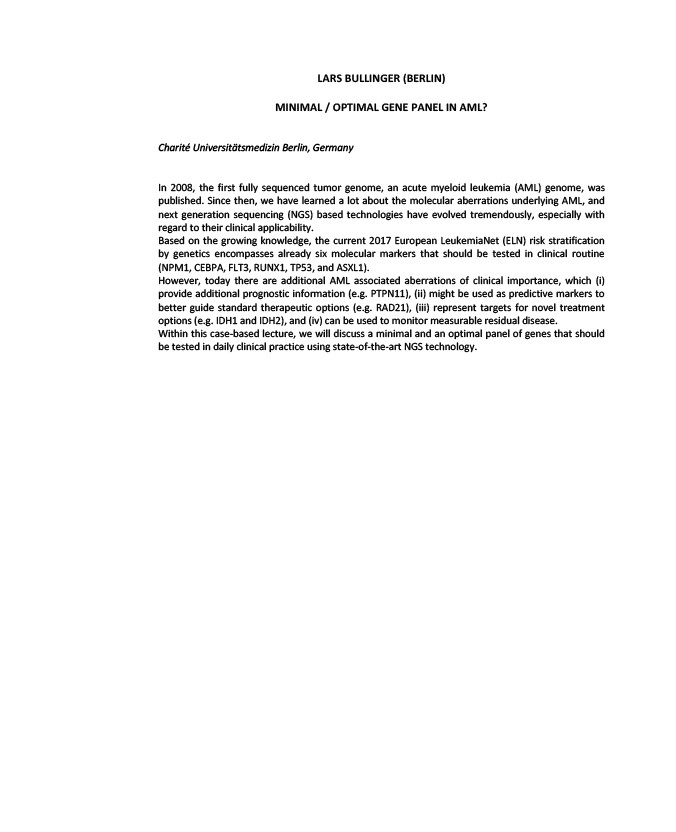
LARS BULLINGER (BERLIN)
MINIMAL / OPTIMAL GENE PANEL IN AML?
Charité Universitätsmedizin Berlin, Germany
In 2008, the first fully sequenced tumor genome, an acute myeloid leukemia (AML) genome, was
published. Since then, we have learned a lot about the molecular aberrations underlying AML, and
next generation sequencing (NGS) based technologies have evolved tremendously, especially with
regard to their clinical applicability.
Based on the growing knowledge, the current 2017 European LeukemiaNet (ELN) risk stratification
by genetics encompasses already six molecular markers that should be tested in clinical routine
(NPM1, CEBPA, FLT3, RUNX1, TP53, and ASXL1).
However, today there are additional AML associated aberrations of clinical importance, which (i)
provide additional prognostic information (e.g. PTPN11), (ii) might be used as predictive markers to
better guide standard therapeutic options (e.g. RAD21), (iii) represent targets for novel treatment
options (e.g. IDH1 and IDH2), and (iv) can be used to monitor measurable residual disease.
Within this case-based lecture, we will discuss a minimal and an optimal panel of genes that should
be tested in daily clinical practice using state-of-the-art NGS technology.